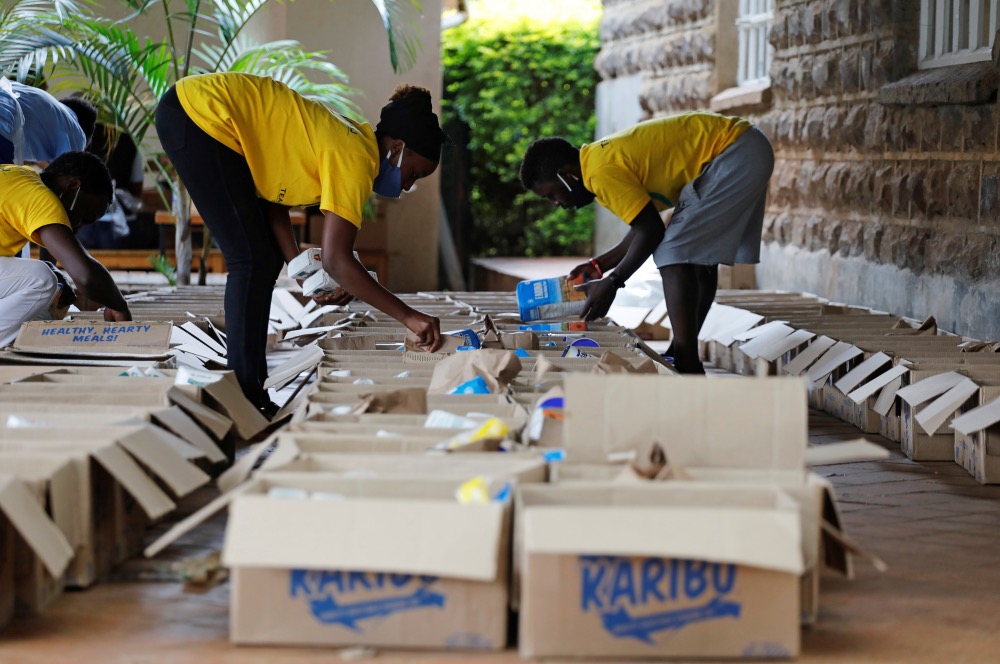London, UK
Thomson Reuters Foundation
Aid workers suffered a record 277 major attacks around the world last year, an independent humanitarian research organisation said on Monday, with healthcare workers responding to crises facing a spike in deadly violence.
A total of 483 aid workers were killed, kidnapped, or wounded in 2019, showed data from Humanitarian Outcomes, the highest number since the start of its records in 1997.
“The ability to help vulnerable civilians in their hour of greatest need is a sign of civilisation; it’s a right under international law,” Jan Egeland, Secretary General of the Norwegian Refugee Council, said in response to the figures.
“But we are seeing an increasing number of colleagues killed, abducted, wounded…If aid workers are not protected, lifelines will falter.”

Workers of the Team Pankaj aid group pack boxes with food donations to be distributed for people in need in the capital’s poorest neighbourhoods, in Nairobi, Kenya, on 14th April. PICTURE: Reuters/Baz Ratner /File photo.
Although casualties were up overall, the number of aid worker who were killed dropped slightly to 125, from 131 a year previously, according to the data, which draws on public reports, security organisations and aid groups.
Health workers made up more than 40 per cent of the fatalities – higher than any previous year recorded – according to analysis for the upcoming Aid Worker Security Report which is due to be released later this month.
Health staff have been repeatedly targeted in Syria, which was named the most violent country for aid workers, with 47 attacks and 36 fatalities last year.
They also faced a surge in violence in the Democratic Republic of Congo, which saw the biggest rise in attacks on humanitarian workers.
More than half the 27 violent incidents reported in Congo last year were committed against health workers responding to the Ebola disease outbreak, said Humanitarian Outcomes.
Its upcoming report will look at how the aid sector is adapting to risks posed by major epidemics.
However, there is so far little sign of any uptick in violence linked to the COVID-19 pandemic, said Abby Stoddard, a partner at the research and consultancy organisation.
Stoddard added that much violence on aid workers was committed by non-state armed groups, with attacks posing a huge challenge to reaching those in need of help.
“They [attacks] have a huge impact – more than need, and more than donor funding available, we have seen security will really dictate where and what aid organisations end up doing,” she told the Thomson Reuters Foundation.





